How to Write Engaging Technical Blogs
Learn the rules for writing technical blogs, and increase unique views tenfold. Focusing on title, images, vocabulary, code blocks, writing style, and social media promotion can help you build a solid brand.

Image by author
Writing engaging blogs is an art and to master the art, you need to practice it. There are no shortcuts to writing quality blogs, and you must learn from your mistakes and improve with time. You also need to assess the trend and write about things you love. Make it personalized, grow your brand, and increase your following.
In this blog, we will learn about the rules of writing engaging technical blogs. We will focus on generating the best titles, designing attractive cover images, adding fun facts, supporting tutorials with code blocks, and social media promotion.
The rules that we will learn in this blog are from my personal experience as I have written more than 50 blogs and 40 technical articles. I have received an award from Analytics Vidhya for writing the best tutorial and got multiple awards from KDnuggets. If you are interested in my work, check out my Polywork and Deepnote profile.
Title
The title is one of the most important things about the blog. You should spend at least two hours brainstorming the best title that could go viral. It is the first thing that will make your readers click on the blog post. If your title is engaging or provides additive value to your readers, they will eventually read the whole thing. The art of writing titles comes from practice but, you can also use tools to become better. These tools have worked for me. The internet is full of SEO optimization tools and almost every other platform offers title generation.
Blog Ideas Generator: it converts keywords into engaging titles. I don’t consider the generated title as a good one. In my opinion, these tools are here to help you but, you need to come up with a title that works for you.
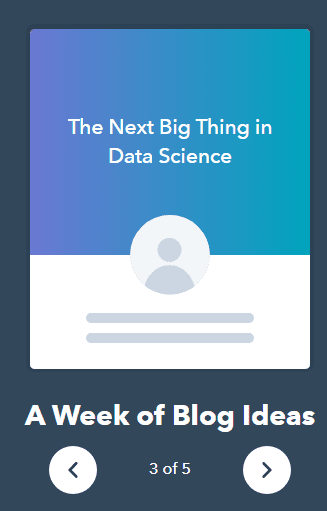
Image credit: hubspot
KDnuggets/Towards Data Science: it is better to read what other writers in your domains are currently writing. Look for the top read blog post and try to come up with yours. I am sure reading multiple blogs daily will help you generate tons of new titles.
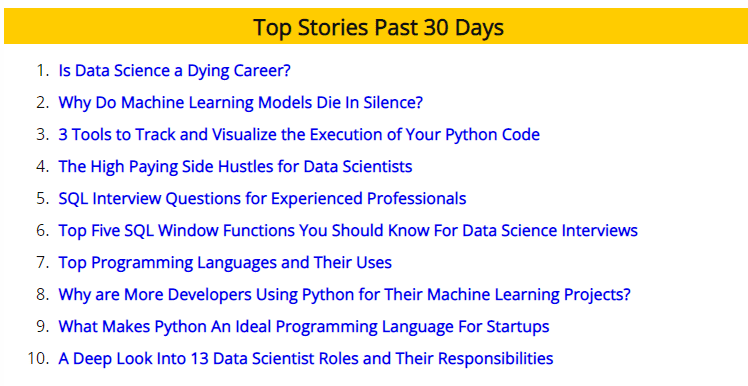
Image credit: KDnuggets
Keyword Planner: pulls the data from various platforms and provides you with keyword analytics. These results include search volume, trends, and competition. You can use these parameters to select the next topic.
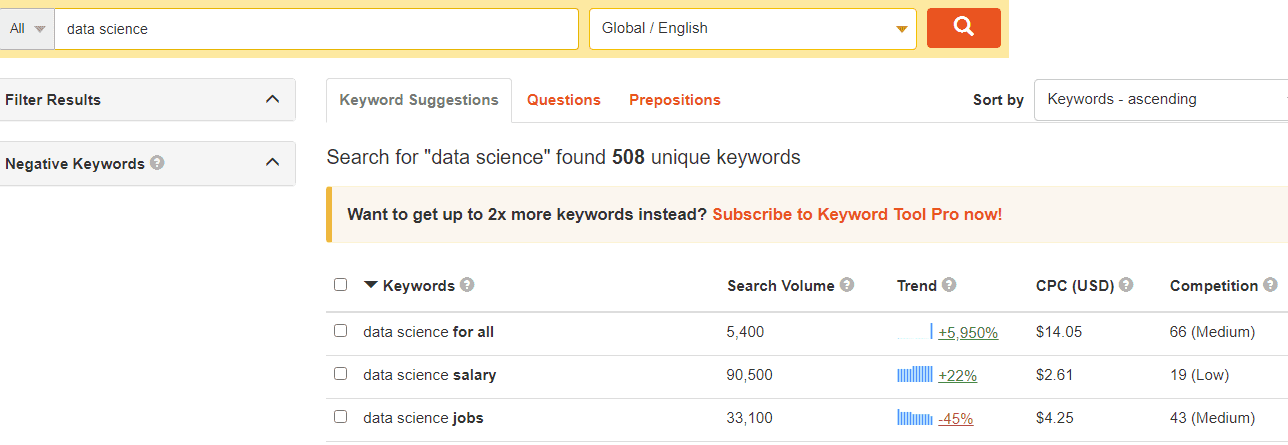
Image credit: keywordtool.io
There are other tools that are free and will work for you, such as Google trends, but again you have to come up with the title. Be honest about the title and don’t try to clickbait your readers as this strategy only works for TikTok or Youtube.
Rules
- Use google trends to gain insights on your title
- Use free tools to generate blog ideas
- Writing title as a question will motivate reader to learn about answer
- Keep trying new and attractive ways to write the title
- Use Job, Money, or Top in title to get more attraction
- Use numbers and facts in the title
- Keep experimenting and learn from top viewed blogs
Images
Humans process images 60,000 times faster than reading text and 90 percent of information sent to the brain is visual so the cover image is the most important thing about your blog - t-sciences.com. It is the make or break factor for your blog. You need to convey your story through attractive colors, designs, and text on the image. I cannot teach you the art of creating viral blog covers but I can guide you to the tools that have helped me in the past.
- Unsplash: you can get free photos from this platform and the only thing you need to do is to pick the correct image that will work for you. The platform offers 1,000,000+ Free Images to download with author attribution. You will see these images on thousands of blog posts so it’s the go-to tool for every blogger.
- Freepik: You can get limited but free vectors of your choice. In my opinion, people click more on the blog if the cover image is animated which means the image should poetry some sort of story or message about your blog. Using vectors has given me new meaning to writing blog posts and I can always edit the vectors using Illustration tools to customize my image.
- Canva: It is my go-to tool for generating cover photos. You can easily edit it in the browser and then download it. Canva comes with templates, vectors, photos, and editioning tools.

Image by author
Rules
- Use attractive color schemes
- Use limited text on the Image
- Be creative and use free images
- Use editing tools to customize cover
- Make sure the Images are related to your topic
- Simple and minimal designs can attract a larger audience
- Do not add too many elements
Fun to Read
If your blog is bland and full of scientific terms then you will lose most of the audience. Readers will skip the whole blog to read fun facts or figures. The modern generation has a shorter attention span, so you need to come up with a blog that is short and full of cookies. These cookies will help enhance readers' experience and in return you will be gaining loyal viewership. I usually add images, facts & figures, plots, bullet points, headings, quotations, and conclusions. The whole idea of writing a blog is to make the reading experience smooth.
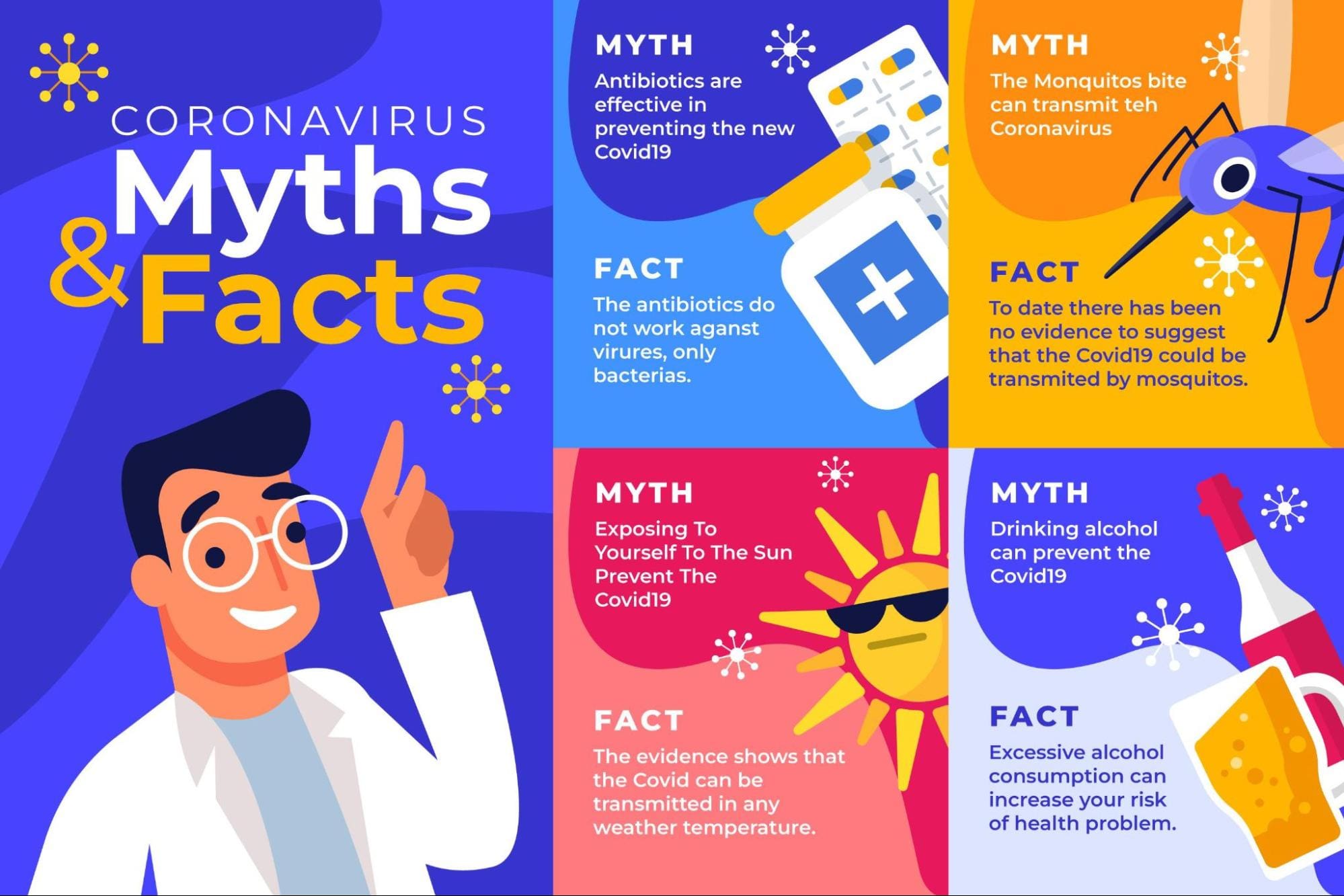
Image by freepik
Rules
- Add fun facts
- Adding joke can enhances reader experience, even if the jokes are bad
- Be creative on explaining new or complex ideas
- Use fact and figures to support your claims
- Use infographic to explain model architect or algorithms
- Do not use high level of vocabulary to explain terminologies
Code Blocks
Just like mathematical equations are necessary for technical research papers, the code blocks are necessary for technical blogs. The data science or machine learning tutorials are useless without the code blocks. It provides readers to test the claims made by the author on their own. The code blocks can also enhance the overall reading experience where you can follow the entire tutorial.
I have seen multiple software engineers and data scientists directly jumping to the coding part. For example, if I am looking for an LSTM model on time series, I am only interested in code and how they are dealing with the specific problem. I will copy the code and try it myself or integrate the similar code into my current project.
The tools for generating code blocks:
Carbon: it can convert your code into an attractive image with correct syntax highlights. You will see a lot of influencers and data scientists using this tool on social media or adding it in the blog post.
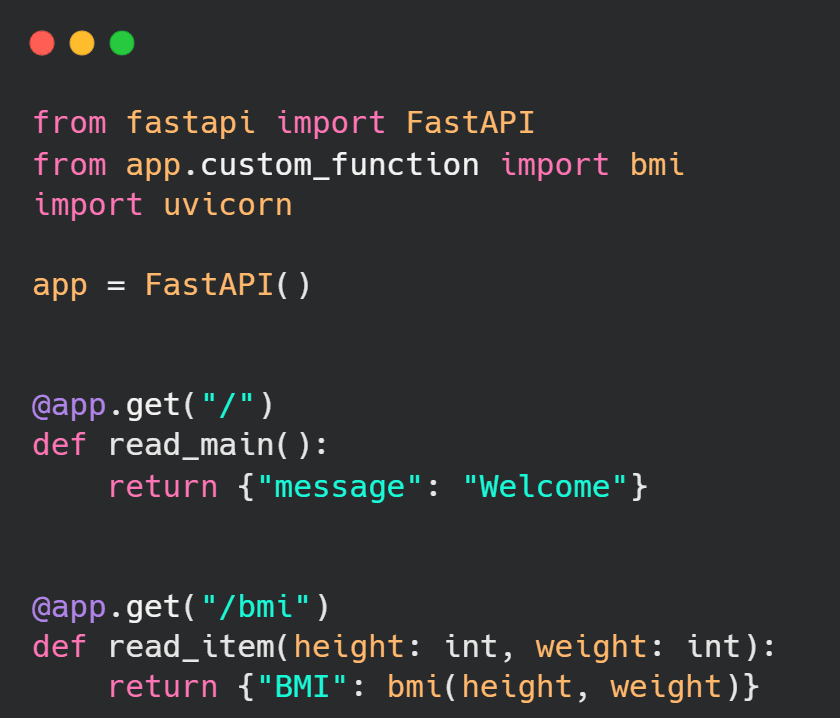
Image by author
Deepnote Embed Cell: can convert any Jupyter notebook cell into a shareable code block with the output. As you can see below, the blog contains an interactive Plotly chart with animation. You have the option to remove the code block or add both code and output according to your need.
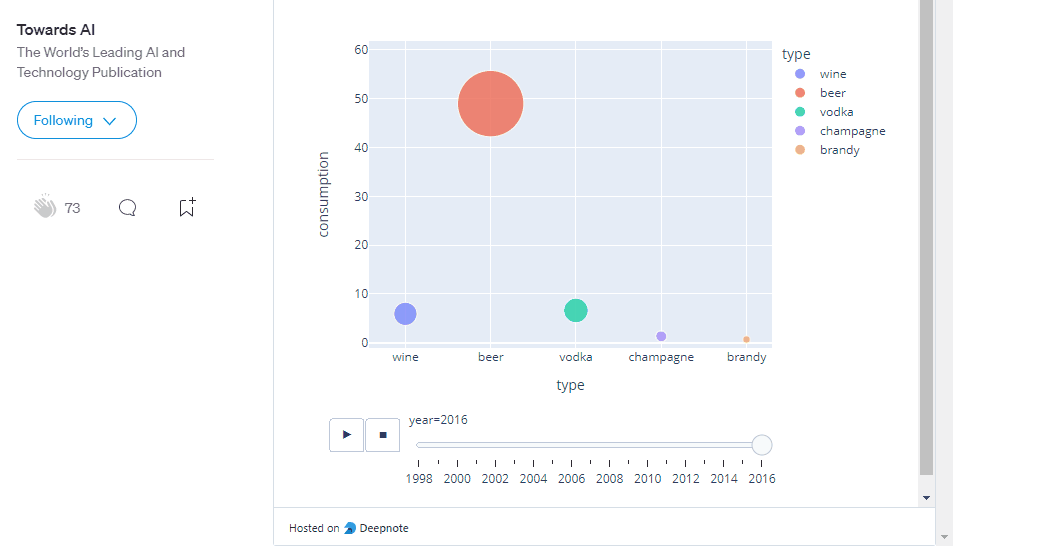
Gif by author
Github Gist: it is the most common tool used by technical bloggers to show the project code. It is fast to load, has the correct syntax highlighting, and it is compatible with majority of platforms.
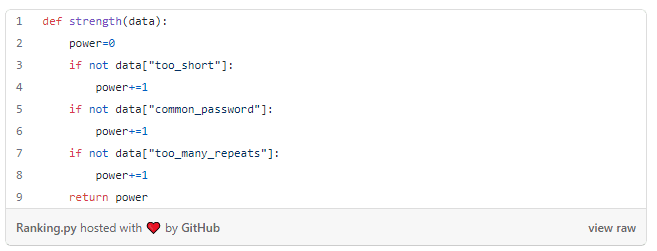
Image by author
Rules
- Use interactive code blocks
- Format your code before generating code block
- Make sure syntax highlights are user friendly
- Use Gif to show outputs
- Make sure using embed code does not increase blog loading time
Personalized
Write about the topics that you care about. People will quickly figure out if you are faking or copying other authors' work. Do not destroy your brand by following trends. These trends will keep on changing, and it's hard to keep up. Make sure that your blog is personalized. Write about your personal experience, the good, bad, and ugly. Be honest with your audience and trust me, it will help you in the long run.
I always add my options on what went wrong during the project. I even give tips on things that have worked for me. Always think about what your readers are enjoying and try to improve your blogs according to it. If readers are enjoying more infographics, then try to add more infographics. You need to understand that you are writing for humans, so make it simple and easy to read. No one is interested in all code or all scientific equations.

Photo by Sincerely Media on Unsplash
Rules
- Do your research
- Write what you love
- Write about good, bad, and ugly experience
- Give real life example while explaining complex Idea
- Tap into readers mind to improve content
- Keep it simple and easy to read
- Be honest and factual
Promotions
After publishing the blog post, it is prime time to promote your work. Write a short and attractive message for the social media post and make it personalized for every platform. Use hashtags to increase the post reach. Add an appealing image to make your audience click on the post, and don’t limit yourself to a few social media websites. If you are new to the blogging world then, you should use every cheap tactic to get your blog post trending. Ask people in your connection to help you promote. If you are hungry enough, I am sure you will find ways to promote your blog.
Social Media Platforms
- Dev.to
- Polywork
- Hacker News
- Slack
- Discord
- Data Science Forums

Photo by Merakist on Unsplash
Rules
- Customize the message
- Post it on multiple social media platforms
- Use hashtags
- Add Cover photo
- Stay active in comment section
- Don’t over do it
Final Thoughts
The only thing that will make you better is the ability to learn and adapt. Learn from famous technical writers and try to decipher what is working for them. Stay active on social media and look for impressive blog posts. If the post makes you click on it, then figure out why.
Learn how to create attractive cover photos, titles, subtitles, facts & figures, and research techniques. Promote all the blog posts on all of the social media platforms, even on Instagram. Do not limit yourself, but don’t overdo it. If you observe that people are not responding on a specific platform, then stop posting on it. In this journey, you will face several failures but, the main thing is to keep publishing and keep learning from your mistakes.
Abid Ali Awan (@1abidaliawan) is a certified data scientist professional who loves building machine learning models. Currently, he is focusing on content creation and writing technical blogs on machine learning and data science technologies. Abid holds a Master's degree in Technology Management and a bachelor's degree in Telecommunication Engineering. His vision is to build an AI product using a graph neural network for students struggling with mental illness.
